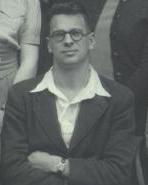David Wheeler (computer scientist) facts for kids
Quick facts for kids
David Wheeler FRS
|
|
|---|---|
 |
|
| Born |
David John Wheeler
9 February 1927 Birmingham, England
|
| Died | 13 December 2004 (aged 77) Cambridge, England
|
| Nationality | British |
| Education | University of Cambridge (MA, PhD) |
| Known for | inventing subroutines Burrows–Wheeler transform (BWT) Tiny Encryption Algorithm (TEA) Wheeler Jump WAKE EDSAC |
| Awards | Fellow of the Royal Society (1981) Computer Pioneer Award (1985) Fellow, Computer History Museum (2003) |
| Scientific career | |
| Fields | Computer Science |
| Institutions | University of Cambridge Computer Lab, Cambridge Darwin College, Cambridge |
| Thesis | Automatic Computing With EDSAC (1951) |
| Doctoral advisor | Maurice Wilkes |
| Doctoral students |
|
David John Wheeler (born February 9, 1927 – died December 13, 2004) was a brilliant computer scientist. He was also a professor at the University of Cambridge in England. He made many important discoveries that helped shape how computers work today.
Contents
Early Life and Education
David Wheeler was born in Birmingham, England. He was the second of three children. His father, Arthur, was an engineer.
David won a scholarship in 1938 to attend King Edward VI Camp Hill School. His schooling was interrupted by World War II. He finished his studies at Hanley High School.
In 1945, he earned another scholarship. This allowed him to study maths at Trinity College, Cambridge. He graduated in 1948. In 1951, he earned the very first PhD in computer science ever awarded in the world.
Amazing Career in Computing
Wheeler made many big contributions to computer science.
Working with EDSAC
In the 1950s, he worked on a very early computer called the Electronic Delay Storage Automatic Calculator (EDSAC). This computer was one of the first of its kind.
In 1950, David Wheeler and Maurice Wilkes used EDSAC to solve a complex math problem. This problem was about how genes change over time. This was the first time a computer was used to help with a problem in biology.
Inventing Subroutines
Around 1951, David Wheeler, along with Maurice Wilkes and Stanley Gill, invented a key idea in computer programming called the subroutine. A subroutine is like a mini-program or a set of instructions that can be used many times within a larger program. This saves a lot of time and makes programs easier to write.
They also showed how to create software libraries. These are collections of ready-to-use computer code. Because of his work, a special command in computers was even named after him: the "Wheeler Jump".
Other Important Work
Wheeler also helped create the Burrows–Wheeler transform. This is a clever way to compress data, making files smaller.
He worked on the CAP computer. This was the first computer designed with strong security features built in.
In the field of cryptography (making and breaking secret codes), he designed a code called WAKE. He also helped create the TEA and XTEA encryption methods. These are used to keep information secret and safe.
David Wheeler became a Fellow at Darwin College, Cambridge in 1964. He officially retired in 1994. However, he kept working actively at the University of Cambridge Computer Laboratory until he passed away.
Personal Life
On August 24, 1957, David Wheeler married Joyce Margaret Blackler. She was also a research student who used the EDSAC computer for her own studies. They had two daughters and one son.
David Wheeler sadly died from a heart attack on December 13, 2004. He was cycling home from the Computer Laboratory.
Recognition and Legacy
David Wheeler received many honors for his important work:
- In 1981, he was chosen as a Fellow of the Royal Society. This is a very high honor for scientists in the UK.
- In 1985, he received a Computer Pioneer Award. This was for his work on assembly language programming, which is a basic way to talk to computers.
- In 1994, he became a Fellow of the Association for Computing Machinery.
- In 2003, he was named a Computer History Museum Fellow. This was for inventing the subroutine and for his work on other computer designs.
The Computer Laboratory at the University of Cambridge holds special talks each year called the "Wheeler Lecture". These lectures are named in his honor.
Famous Quotes
David Wheeler is known for some clever sayings about computer science. One famous quote is: "All problems in computer science can be solved by another level of indirection." This means that if you have a problem, you can often solve it by adding another step or layer to the process. He sometimes added, "except for the problem of too many layers of indirection!"
Another quote attributed to him is: "Compatibility means deliberately repeating other people's mistakes." This means that sometimes, to make new things work with old things, you have to keep old problems.

